Fardh al-Qanoon & Conflict Simulation: a reflection
The following reflection was written for my Fardh al-Qanoon project as part of the Conflict Simulation course at King’s College London. The completed version 1.0 of the simulation can be found here.
As someone with no prior manual wargaming experience, I found the process of designing a counterinsurgency simulation profoundly frustrating and, simultaneously, immensely gratifying. I believe the limitations imposed by the assignment and the medium of a tabletop game force a designer to develop a deeper and more thorough understanding of a conflict than they would otherwise have to with an analytical essay. A written argument is flexible and there is a level of inherent ambiguity in its presentation, whereas a conflict simulation is a testable hypothesis (though there is, of course, plenty of room for debate in its design as well). In retrospect, I probably would have chosen a far more traditional conflict for my introductory experience to simulation design, but I found the challenge of recreating a counterinsurgency operation in game form to be thoroughly rewarding and learned much about not only counterinsurgency and the Baghdad Security Plan itself, but about creating and testing models.
My first observation about simulation design is how much more rigorous the research process was than for other academic assignments I’ve had. The amount of information required to design a useful simulation demands a very thorough research process given the complex dynamics at play in a war or battle (perhaps even more so in an insurgency). While any piece of academic work requires thorough research, I believe the variety and depth of information required for a simulation distinguishes it from an essay. In my own simulation, I found the lack of quality information for certain aspects of the conflict (in particular, anything to do with non-Western forces) to be a challenge, and it was fascinating to see how using the simulation helped me partially “fill in the blanks” and gave me a basis for modifying my research. For example, finding information about opposition manpower in Baghdad was nearly impossible, with sources varying from being simply unavailable to outright detrimental because they presented unreliable guesses. As I reviewed other counterinsurgency simulations and created a storyboard version of my own, I realized that I could approach the problem of “quantifying” the opposition from another angle: looking at their effects rather than the means they used to achieve them. The Coalition collected ample data about violence throughout Iraq, and while the usefulness and methodology of collection is a topic unto itself, the overall trends in the data provide a picture of how the Mahdi Army (the primary opposition of my simulation) changes over the period of the Baghdad Security Plan. Verifying my analysis meant plugging that information into my simulation and seeing if it fit with my overall conception of the conflict, an option I would not have with a traditional essay.
The most valuable part of my experience designing this simulation has been the exercise of a different set of analytical skills. I have always had an interest in game-based models, having played computer strategy games from a young age and “modding” them for realism. My interest was always a hobby, however, and the results never had anything resembling academic rigor. Attempting to design realistic and useful simulations certainly involves skills applicable to a wide range of disciplines beyond conflict simulation, since you are essentially creating a testable model. The same principles can be applied to modeling politics, economics, or any number of systems (albeit with very different characteristics), and the analysis skills employed are universally useful. I believe the reason simulation design is a constructive intellectual exercise at all is the avoidance of counterfactual history. Modeling a conflict is about finding what did happen and creating a system that shows you how (which goes a long way to answering the why). It is tempting at various stages to ask “what if?” My biggest concern with simulation was how a designer could plausibly “prove” a set of rules, since history only provides a single trial’s worth of data. In creating game mechanics that model particular dynamics of a battle or war, the designer seeks to explain just one historical outcome. While doing so may provide some insight into how things could have gone differently, a simulation does not aim to provide predictive answers to the “what if?” questions that inevitably arise. When I came to terms with this fact, I found designing my simulation to be far easier. I was too worried about being theory-agnostic with my design, since different writers claimed different elements of the Baghdad Security Plan were the drivers of the reduction in violence. Was it the increased troop presence, the change in tactics, the relatively demure Shia response, or perhaps the “Sunni Awakening”? Instead of trying to say “here is what happened, here is why the other one did not happen” the simulation says (or attempts to say) “here are the elements, and here is how they are related.” The magnitude of each element’s effect on the outcome is debatable, so the simulation must be flexible enough that someone can alter a rule or tweak a variable and thus create a simulation that models their hypothesis instead.
As a pupil of the computer age, I found the limitations of a manual simulation to be chafing at times. At every stage of the rules design, I could not help but think of how I could model a mechanic more realistically with a line of program code. The simplicity requirements of the assignment bordered on the austere, especially for my chosen conflict, but I am tentatively satisfied with the end result after several playtests with someone who was not familiar with wargames or Operation Fardh al-Qanoon. After playing the game as both the Coalition and Mahdi Army several times, this person was able to identify the key elements of the conflict and the challenges faced by each player faction (and, to some extent, the non-player Sunni faction). While I don’t think a manual game can fully cover the hideous complexity of Fardh al-Qanoon (not to imply that a computer-aided simulation would have a much better go at it), it is far more accessible to the audience and players, since they are aware of everything that determines the outcome. They know every rule, every die roll, and every decision that led to a certain result; my playtester, for example, correctly saw that there were no traditional “fronts” in the people-centric conflict I was trying to simulate, but that each player’s relationship to a third actor (the population) created a similar dynamic as the Mahdi Army was rolled back district by district until they were only able to easily operate in one or two areas, usually including the Shia stronghold of Sadr City. Knowing what effects Joint Security Stations have, what Mahdi Stacking Limits were and what they were based on, and what caused Mahdi influence to increase and decrease made the conflict accessible in a way that a computer simulation would not, in part because computers programs are opaque (although this can be mitigated with detailed logs), but even more so because of the complexity it enables. The nature of a manual simulation necessitates simplicity; anyone who has had to debug program code knows how incredibly complicated it can be to identify the cause of a single outcome in a complex program, much less the sequential series of outcomes that the result of a wargame entails.
To say I learned a lot from designing and playing simulations in this course would be an understatement. Whenever I read about a battle or war now, I immediately start thinking about how I could model it. As someone with no military background, I find it much easier to comprehend and absorb new operational concepts because I can conceive of them as being part of a model with certain rules (in the systemic rather than game sense), thus making them more accessible to me. I have seen this same thing occur as a TA running wargames for undergraduate students, who connected their academic knowledge of history with game mechanics to inform their in-game decisions. By looking at games for the first time as an academic tool rather than strictly as a source of recreation, I have found a rich new analytic method with which to think about war (and indeed any social science where laboratory experiments are simply not feasible). The challenge of designing a counterinsurgency simulation within the assignment’s restraints has been an educational experience, but I also look forward to continuing my development of the game and seeing how I can further improve it with different parameters such as having more than two players, longer play time, and perhaps limited computer-aided calculations.
Other games to consider
- Anderson, John. (2009). Battle for Fallujah. London: King’s College London.
- Anderson, Michael, Jon Compton, and Joseph Miranda. (2010). Battle for Baghdad. Mission Viejo, CA: MCS Group.
- de Gunzbourg, Antoine. (2008). The Battle of Algiers. London: King’s College London.
- Herrschaft, Tom and Mark H. Walker. (2008). Lock ‘n Load: A Day of Heroes. Henry, VA: Lock ‘n Load Publishing LLC.
- Miranda, Joseph. (1996). Greenline: Chechnya. Game Publications Group.
- Miranda, Joseph. (1991). Holy War: Afghanistan. Bakersfield, CA: Decision Games.
- Miranda, Joseph. (1993). L.A. Lawless. Bakersfield, CA: Decision Games.
- Ruhnke, Volko. (Forthcoming 2012). Andean Abyss. Hanford, CA: GMT Games.
- Ruhnke, Volko. (2010). Labyrinth: The War on Terror, 2001 – ?. Hanford, CA: GMT Games.
- Train, Brian. (2006). Algeria: The War of Independence 1954-1962. Toronto: Fiery Dragon Productions.
- Train, Brian. (1999). Battle for China. Toronto: Fiery Dragon Productions.
- Train, Brian. (1996). Civil Power. Strategy Gaming Society.
- Walker, Mark H. (2004). Operation Iraqi Freedom. Armchair General.


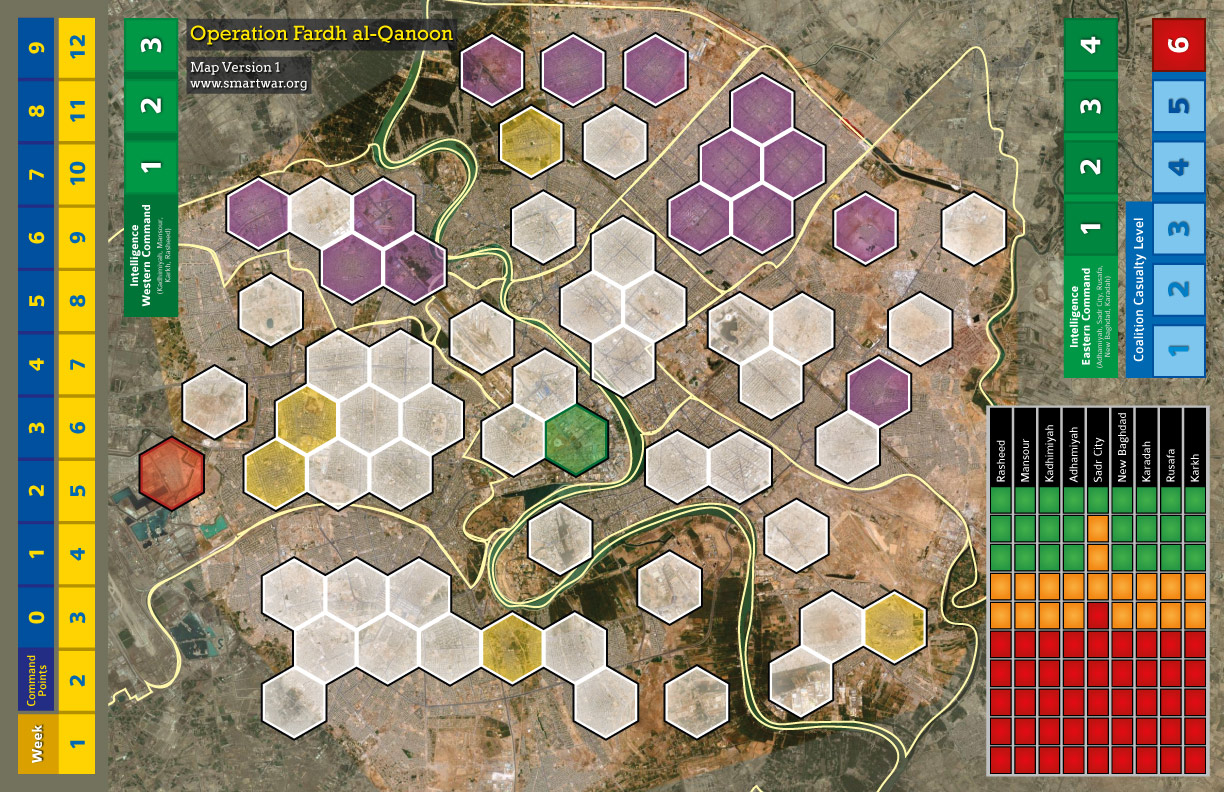
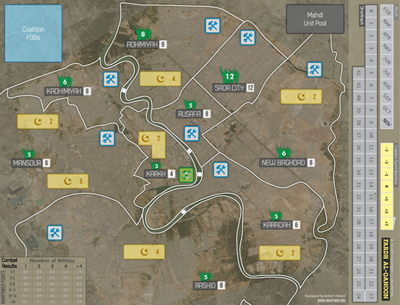
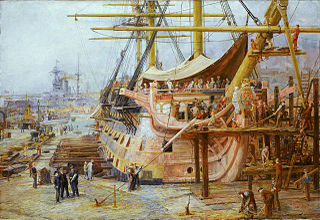

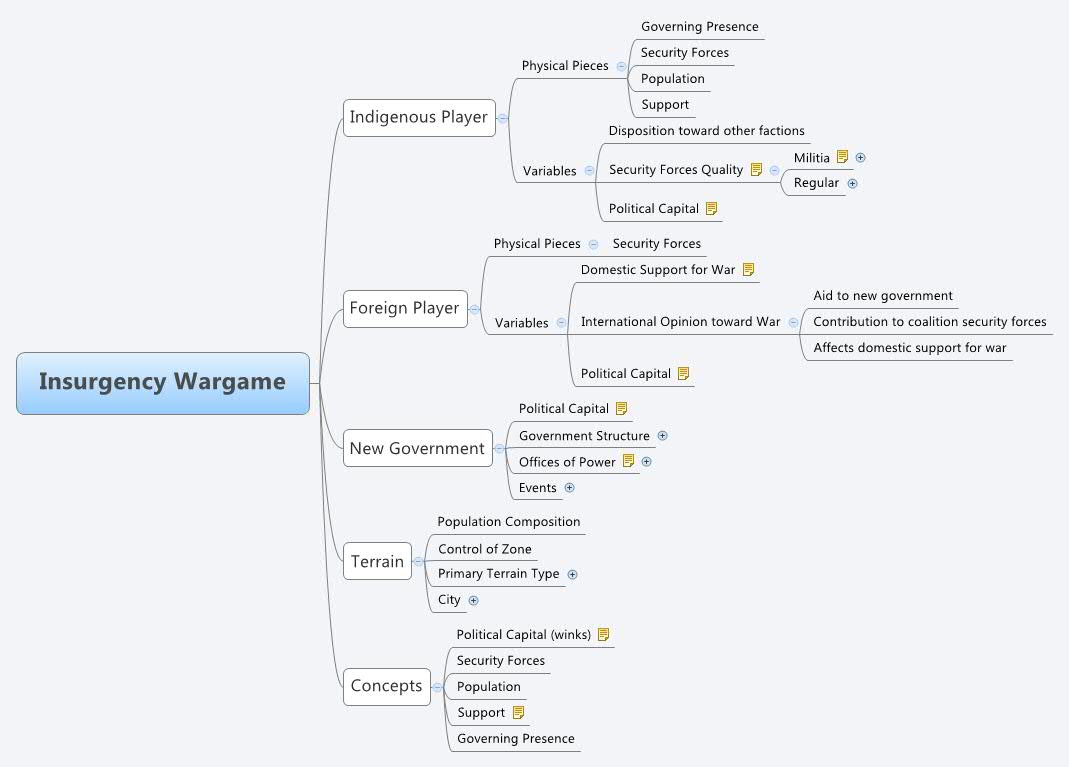
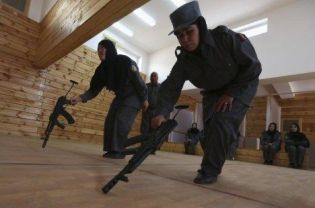


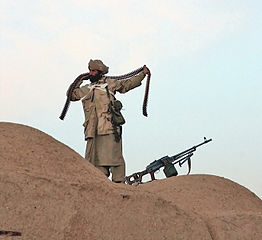
Some great comments, Robert–we’ve all enjoyed following along with your design of the game.